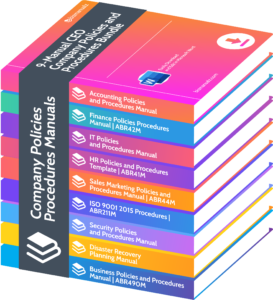What Should a CEO Know About Financial Data Analytics?

Are you a CEO seeking to make data-driven decisions for your company’s financial success? In today’s rapidly changing business landscape, having a comprehensive understanding of financial data analytics is crucial for staying competitive and making informed choices. This article will provide you with essential knowledge and tools to effectively utilize financial data analytics for your organization’s benefit. What should a CEO know about CEO financial data analytics?
What is Financial Data Analytics?
Financial data analytics is the process of analyzing large sets of financial data to uncover insights, patterns, and trends that can inform business decision-making. This involves utilizing statistical techniques, data mining, and machine learning algorithms to extract valuable information from financial data.
Through the analysis of financial data, CEOs can gain a deeper understanding of their company’s financial performance, identify potential risks and opportunities, and make informed decisions based on data.
An example of this is a retail company’s CEO utilizing financial data analytics to identify customer purchasing patterns and improve inventory management, resulting in significant cost savings and increased customer satisfaction.
Why is Financial Data Analytics Important for CEOs?
Financial data analytics plays a crucial role for CEOs as it provides valuable insights that drive informed decision-making. By utilizing data analytics, CEOs can identify patterns, trends, and opportunities that greatly impact their company’s financial performance. This enables them to make strategic adjustments, effectively allocate resources, and mitigate risks.
Additionally, financial data analytics allows CEOs to track key performance indicators, evaluate the success of initiatives, and effectively communicate financial results to stakeholders. With a comprehensive understanding of the financial landscape, CEOs can successfully guide their organizations towards growth, profitability, and long-term sustainability.
What are the Benefits of Financial Data Analytics for CEOs?
Financial data analytics offers numerous benefits to CEOs. Firstly, it enables data-driven decision-making, providing valuable insights into financial performance, customer behavior, and market trends. This aids CEOs in identifying opportunities for growth and optimizing resource allocation.
Secondly, it enhances risk management by detecting anomalies and potential fraud in financial data. This allows CEOs to proactively mitigate risks and ensure compliance.
Thirdly, financial data analytics improves operational efficiency and cost management by identifying areas for improvement and streamlining processes.
Overall, financial data analytics empowers CEOs with actionable insights, enabling them to make informed decisions that drive business success.
What Types of Financial Data Can be Analyzed?
There are various types of financial data that can be analyzed to provide valuable insights for CEOs. These include:
- Financial Statements: Analyzing income statements, balance sheets, and cash flow statements can help identify trends, assess profitability, and manage liquidity.
- Market Data: Analyzing market trends, customer behavior, and competitor performance can inform strategic decision-making and identify growth opportunities.
- Sales and Revenue Data: Analyzing sales and revenue data can help optimize pricing, identify top-performing products or services, and evaluate sales effectiveness.
- Customer Data: Analyzing customer data can provide insights into customer preferences, purchase patterns, and customer lifetime value.
- Operational Data: Analyzing operational data can help identify cost-saving opportunities, efficiency improvements, and supply chain optimizations.
A CEO of a retail company analyzed sales data and noticed a decline in sales of a particular product category. By further analyzing customer feedback and market trends, they discovered that customers were shifting towards sustainable products. As a result, the CEO introduced a new line of eco-friendly products, leading to a significant boost in sales and customer satisfaction.
What is the Role of Big Data in Financial Data Analytics?
Big data plays a crucial role in financial data analytics by providing a vast amount of information for analysis and insights. It enables CEOs to uncover patterns, trends, and correlations that can inform strategic decisions. Through advanced technologies and algorithms, big data allows for the processing and analysis of large and complex datasets, including customer behavior, market trends, and financial transactions.
By leveraging big data, CEOs can gain a comprehensive understanding of their organization’s performance, identify opportunities for growth, and mitigate risks. Incorporating big data analytics empowers CEOs to make data-driven decisions and stay ahead in today’s competitive business landscape.
Incorporating big data analytics into financial data analysis can be challenging for CEOs due to the volume, variety, and velocity of data. However, with the right infrastructure, tools, and talent, these challenges can be overcome.
It is crucial for CEOs to invest in robust data management systems, employ skilled data analysts, and ensure data security and privacy. Regular monitoring and evaluation of data analytics processes are also essential to continuously optimize its benefits.
By embracing big data analytics, CEOs can harness the power of data to drive innovation, improve operational efficiency, and achieve sustainable business growth.
How Can Predictive Analytics Help CEOs Make Informed Decisions?
Predictive analytics provides CEOs with invaluable insights for making informed decisions. Here are the steps that demonstrate how predictive analytics can help CEOs:
- Identify business objectives and define the problem to be solved.
- Collect relevant data from various sources.
- Cleanse and preprocess the data to ensure accuracy and reliability.
- Apply predictive models and algorithms to analyze historical data.
- Generate forecasts and predictions based on patterns and trends.
- Evaluate the accuracy of predictions and refine models if necessary.
- Utilize insights to make strategic decisions and optimize business operations.
Fact: CEOs who effectively utilize predictive analytics are five times more likely to make accurate business forecasts, resulting in better outcomes and increased profitability.
What are Some Common Tools and Techniques Used in Financial Data Analytics?
When it comes to financial data analytics, there are various common tools and techniques that CEOs should be familiar with. These include:
- Data visualization tools: These tools aid in presenting complex financial data in a visually appealing and easy-to-understand format, making it simpler for CEOs to analyze and make informed decisions.
- Statistical analysis software: This software allows CEOs to conduct statistical tests and analyze trends in financial data, helping them identify patterns and make accurate forecasts.
- Machine learning algorithms: Machine learning algorithms can be utilized to analyze large amounts of financial data, uncovering hidden patterns and correlations that may not be immediately apparent to human analysts.
- Predictive modeling techniques: CEOs can employ predictive modeling techniques to predict future financial performance based on past data, enabling them to anticipate potential risks and opportunities.
By utilizing these tools and techniques, CEOs can gain valuable insights from financial data, make data-driven decisions, and drive their organizations towards success.
What is the Difference Between Descriptive and Prescriptive Analytics?
The distinction between descriptive and prescriptive analytics lies in their focus and purpose. Descriptive analytics primarily deals with historical data and aims to provide insights into past events. This is achieved through techniques such as data aggregation and visualization.
On the other hand, prescriptive analytics goes beyond describing the past and instead focuses on providing recommendations or actions to optimize future outcomes. It utilizes more advanced techniques like machine learning and optimization algorithms to analyze data and suggest the best course of action.
While descriptive analytics informs you about what happened, prescriptive analytics guides you on what to do. By utilizing both types of analytics, CEOs can gain a comprehensive understanding of their business and make informed decisions based on data.
What are Some Real-world Examples of Financial Data Analytics in Action?
Financial data analytics is a powerful tool for CEOs to make informed decisions. Real-world examples of its applications include using predictive modeling for risk assessment, utilizing anomaly detection algorithms for fraud detection, and employing customer segmentation for targeted marketing campaigns. Another example is portfolio optimization, which utilizes advanced algorithms to maximize returns while minimizing risks.
Pro-tip: To get the most out of financial data analytics, CEOs should invest in training their teams, leverage data visualization tools for better insights, and stay updated on the latest technology trends in the field.
How Can CEOs Incorporate Financial Data Analytics into their Decision-making Process?
CEOs can effectively incorporate financial data analytics into their decision-making process by following these steps:
- Identify key business objectives and questions that require data-driven insights.
- Build a team of data analysts and experts to assist in collecting, organizing, and analyzing financial data.
- Invest in advanced analytics tools and technologies to facilitate efficient data processing and visualization.
- Establish clear metrics and KPIs to measure the success of data-driven decisions.
- Promote a data-driven culture within the organization by fostering collaboration and knowledge sharing.
- Regularly review and refine the data analytics strategy to ensure alignment with business goals.
- Continuously monitor and evaluate the impact of data-driven decisions on business performance.
What are the Challenges and Limitations of CEO Financial Data Analytics?
The utilization of financial data analytics has become essential for CEOs to make well-informed decisions. However, there are several challenges and limitations that they should be aware of.
Firstly, ensuring the quality and accuracy of data can be a hurdle, as errors or incomplete data can result in flawed insights.
Secondly, data privacy and security concerns require the careful handling of sensitive information.
Additionally, the complexity of data analysis techniques and tools may require a learning curve for CEOs.
Lastly, effectively interpreting and communicating data findings to stakeholders can be a challenge.
To overcome these limitations, CEOs should prioritize data governance, invest in data security, provide training, and collaborate with data experts.
How Can CEOs Overcome these Challenges and Make the Most of Financial Data Analytics?
To successfully utilize financial data analytics, CEOs can take the following steps:
- Invest in a skilled data analytics team or hire data analysts to ensure accurate and insightful analysis.
- Establish clear goals and objectives for the use of financial data analytics in decision-making.
- Ensure that the data used for analysis is accurate, relevant, and up-to-date.
- Embrace technology and leverage advanced tools and techniques for data collection, analysis, and visualization.
- Promote a data-driven culture within the organization by training employees on the value and importance of financial data analytics.
- Regularly review and evaluate the effectiveness of data analytics initiatives and make necessary adjustments to improve outcomes.
- Collaborate with industry experts and other organizations to gain insights and benchmarks for better decision-making.
By following these steps, CEOs can overcome challenges and harness the power of financial data analytics to drive strategic decision-making and achieve business success.
CEO Financial Data Analytics
The process of examining sizable collections of financial data to find trends, patterns, and insights that can guide corporate choices is known as financial data analytics. To extract useful information from financial data, statistical methods, data mining, and machine learning algorithms are used. CEOs can identify possible risks and opportunities, obtain a deeper understanding of their company’s financial performance, and make data-driven decisions by analyzing financial data.
Frequently Asked Questions

What is financial data analytics and why is it important for CEOs to know about it?
Financial data analytics is the process of using statistical and mathematical techniques to analyze financial data in order to gain insights and make data-driven decisions. It is important for CEOs to know about it because it can help them make strategic business decisions and improve the overall financial performance of their company.
How can financial data analytics benefit a CEO?
Financial data analytics can benefit a CEO in several ways. It can help them identify trends and patterns in their company’s financial data, make more accurate forecasts and predictions, detect potential risks and opportunities, and improve the efficiency and effectiveness of their decision-making process.
What are some key metrics that a CEO should pay attention to in financial data analytics?
Some key metrics that a CEO should pay attention to in financial data analytics include revenue growth, profit margin, return on investment, cash flow, and customer acquisition cost. These metrics can provide valuable insights into the financial health and performance of a company.
How can a CEO ensure the accuracy and reliability of financial data analytics?
A CEO can ensure the accuracy and reliability of financial data analytics by implementing strong data governance practices, using reliable and secure data sources, and regularly reviewing and validating the data being used. It is also important for the CEO to have a thorough understanding of the data analysis process and be involved in it.
Is it necessary for a CEO to have in-depth knowledge of financial data analytics?
While it is not necessary for a CEO to have in-depth technical knowledge of financial data analytics, it is important for them to have a basic understanding of the concepts and techniques involved. This will allow them to effectively communicate with their data analysts and make informed decisions based on the insights provided by financial data analytics.
How can a CEO stay updated on the latest developments and trends in financial data analytics?
A CEO can stay updated on the latest developments and trends in financial data analytics by attending conferences, workshops, and webinars, reading industry publications, and networking with other professionals in the field. They can also consult with their data analytics team and encourage them to stay updated on advancements in their field.
















Leave a Reply